String of Hearts watering is simple, but easy to mess up. This semi succulent plant requires particular watering care. Correct String of Hearts Plant watering ensures a thriving string plant.
You will often see the rosary vine listed as a great plant for beginners. And it is! These are very easy care plants.
Like most succulents, the Sweetheart vine and other string of things plants are pretty tolerant of neglect and poor conditions. With ONE exception.
String of hearts plant watering is key to properly caring for this dry loving plant. Incorrect watering will quickly make your plant sickly and even kill it.
These adorable plants are water SIPPERS, rather than drinkers.
With proper conditions, string of hearts quickly produce long strings of heart shaped leaves that elegantly drape over the edge of a shelf or hang from the plant pot.
Or you can wind them around a wire like this. Lots of fun things to do with them.
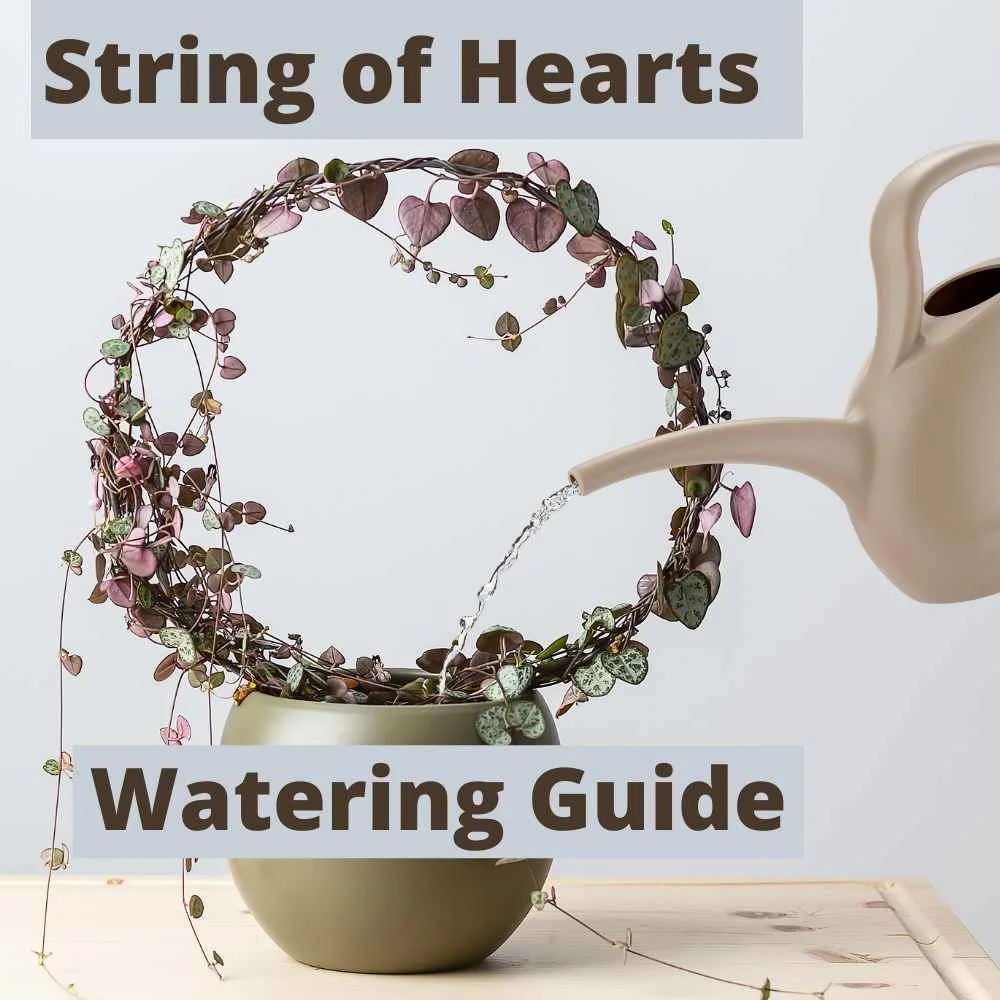
Tips on String of Hearts Watering:
Here’s a list of tips for watering String of Hearts
- Check your plant and soil every two to three weeks to see if it needs water. but no rigid schedule is needed.
- Water when the leaves are shrunken in a bit and the soil is dry.
- Watering method: Soak the pot soil. Allow the soil to completely drain. Pour out any water left in the drain pan. Allow soil to completely dry before watering again.
- A well draining soil is essential for good watering results over time. Heavy wet soil causes root rot in string of hearts.
- Bottom watering avoids hydrophobic soils and allows the roots to grow more deeply Into the soil.
- Expect to water more often in the winter when your home heating system blows dry air. The soil will dry quicker.
- Do not mist the string of hearts plant. High humidity and wet leaves cause leaf rot and viruses in this plant.
Let’s dig deeper into this list.
How do you know When to Water Your Heart Strings?
The Ceropegia Woodii is specially designed by nature to hoard every drop of moisture they receive. They store that water in leaves, stems and the rhizomes.
The plant will show you when it is thirsty. If the leaves are firm, they are full of water. Wait to water your string of heart plant until the leaves are somewhat sucked inwards and the soil is dry. This tells you the plant has used up its water supply and needs replenishing.
How Often Should String Of Hearts be Watered?
String of hearts can go at least two weeks, in most cases, before watering and even more in some cases. A lot of this depends on your plant size, pot size, soil type and your home climate. Expect to water more often in winter.
How to tell when your string of heart needs water:
Water when the soil is DRY and the leaves lose a bit of firmness rather than using a rigid schedule for watering. Determine when to water by checking the soil and looking for the plant’s clues.
If you can’t decide if your plant soil is dry, use a moisture meter. Beware Overwatering. It is the most common way to kill any succulent. And it is VERY easy to do.
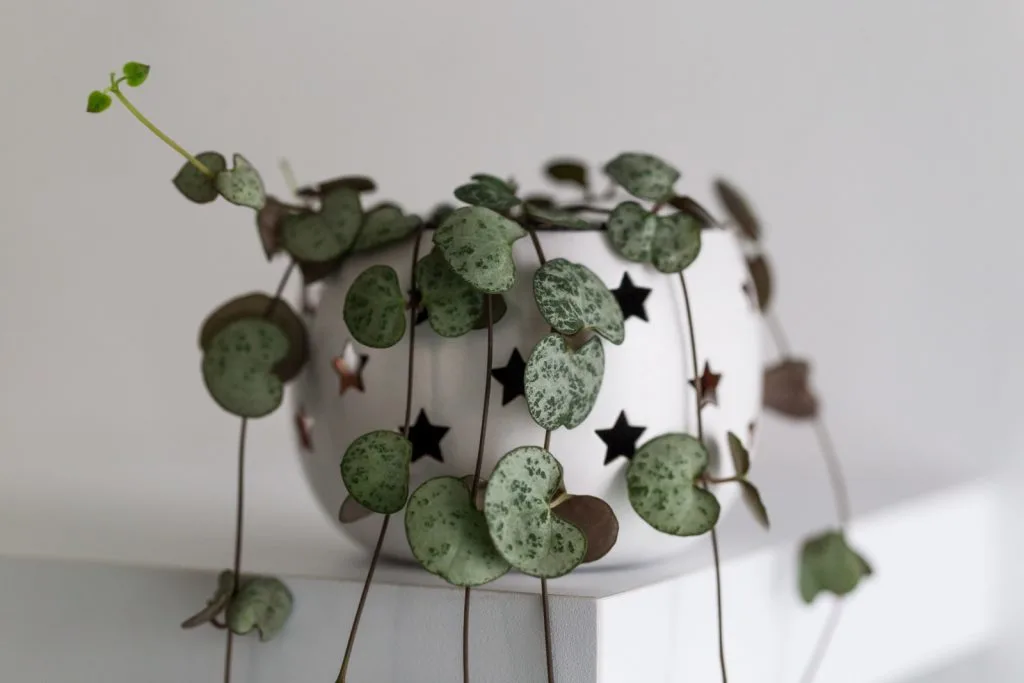
How to Water String Of Hearts Plant:
Watering string of hearts is done by soaking the soil, allowing excess water to drain out and letting it completely dry before watering it again. It’s just that simple. But that is not all there is to watering String of Hearts vine.
If you water this vine as often as your tropical house plants, you are likely overwatering it.
You need to be careful, even when propagating string of Hearts, not to overdo the water. Or you won’t get a new plant. Just a rotted stem.
Read our succulent watering tip guide here, if you have several types of succulents to care for.
The Contented Plant
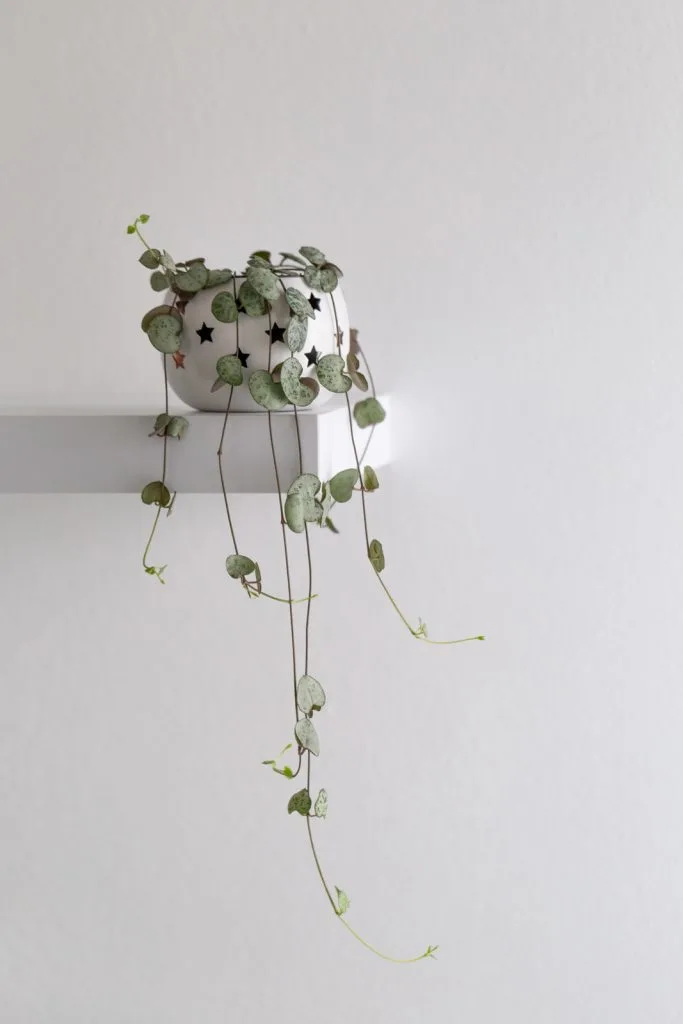
Should you Bottom Water String of Hearts?
String of hearts does well with a bottom watering method. The water stays near the roots where if can do the most good and allows the soil to breathe. Just be sure to allow the pot soil to completely dry before watering.
Learn about the pros and cons of bottom watering. Read our post on bottom watering plants for all the details on bottom watering plants in pots.
More Helpful Ideas on Watering
Soil affects How long moisture stays in pot:
The soil you choose for your string of heart plant is a contributing factor to this plants ultimate success in your home. The best soil for a string of hearts plant is a cactus mix.
Heavy soils hold water close around the roots of the string of heart. This deprives the roots of needed oxygen and also causes root rot. If you have a string of hearts with root rot read How to Fix Root Rot.
Hydrophobic soils are soils that compress and form a hard crust on the top soil. Hydrophobic soils actually REPELL the water you pour on from the top. This often happens with succulents.
Instead of hydrating the roots, the water slides between the soil and the planter and falls uselessly through the pot drain hole. (your pot should definitely have a drain hole).
With hydrophobic conditions, you actually are under watering your plant. You just won’t realize it since you apply water regularly.
Plants are very beneficial to people emotionally and as an environmental addition to your home.
Read more about why houseplants are beneficial to people here .
The Contented Plant
Pot Size Impacts Watering:
The string plants have a TINY root footprint relative to the length of vine they put out. Grow them in small succulent pots that fit the root size rather than the vine length. An appropriate sized pot with a drainage hole will ensure the soil does not hold moister around the roots.
Pot Drainage is a MUST for the Rosemary Vine:
Some small pots are very cute but don’t have drainage. This is dangerous for the string of heart vine. A well draining pot and soil will assist you in giving this plant the best watering care.
If you do choose a pot with no drainage, be sure it is not sitting water logged soil for long lengths of time.
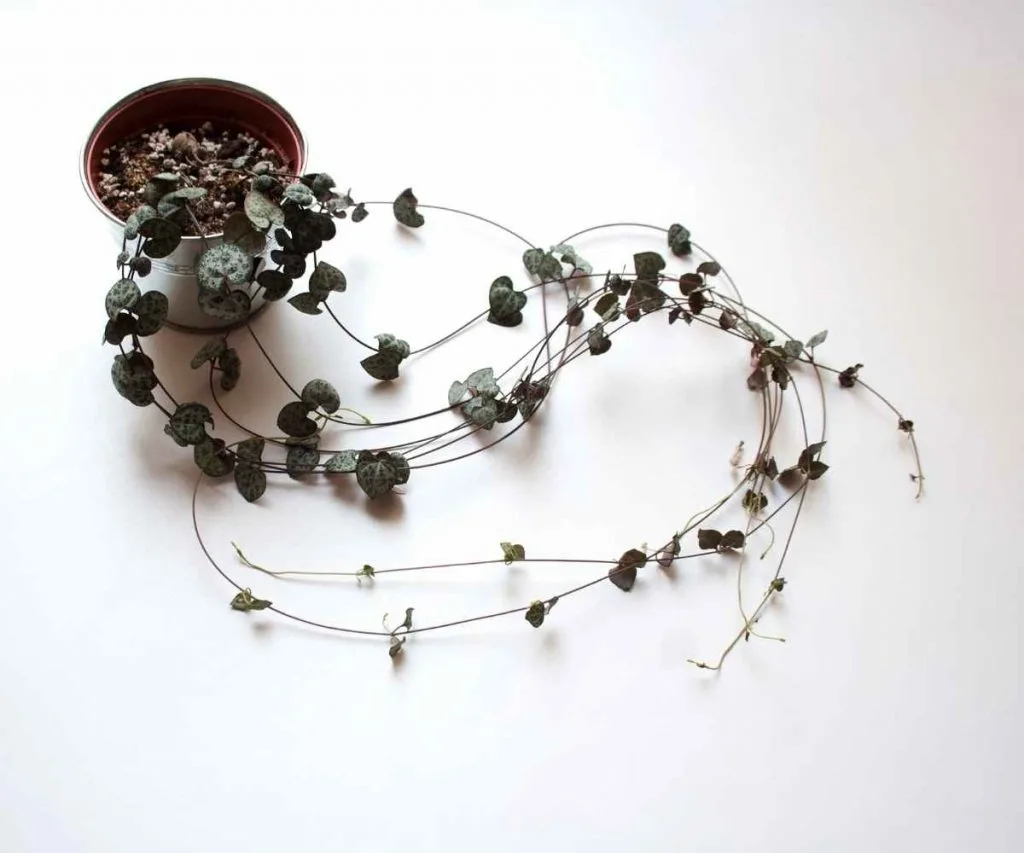
If you have a group planting with string of hearts you will need to keep an eye on it to be sure it can tolerate the watering its companions require.
Follow Us:
Find us on YouTube, Instagram , Pinterest and TikTok! We love to Plant chat. We also comment, like and occasionally share your content to our daily stories. We’d love to see your plants. Share your joy in your houseplants. Happy Planting!
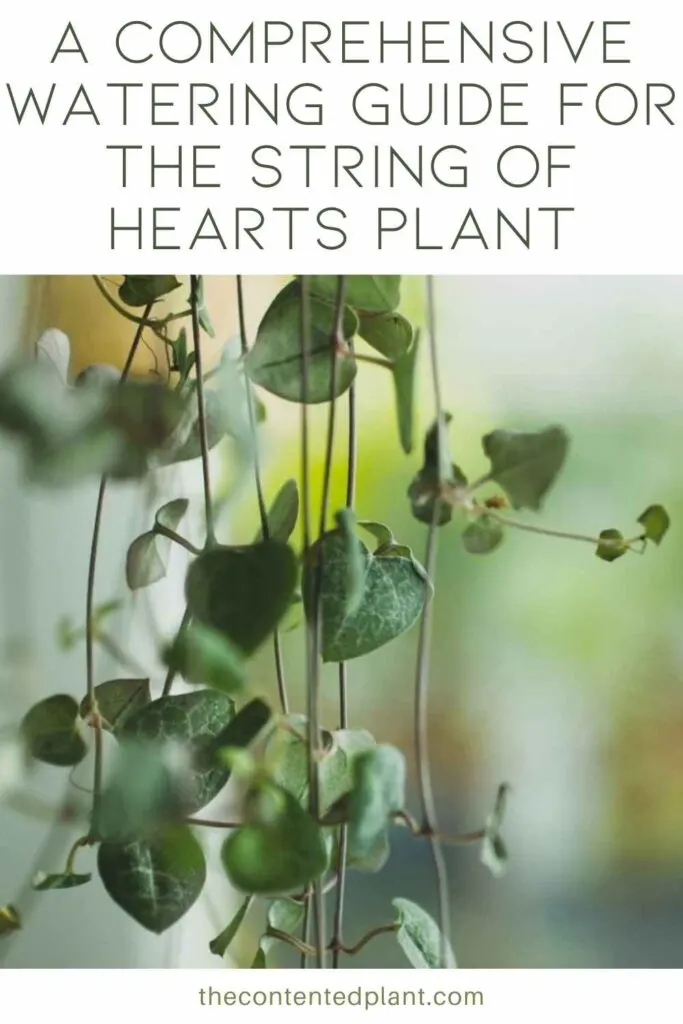

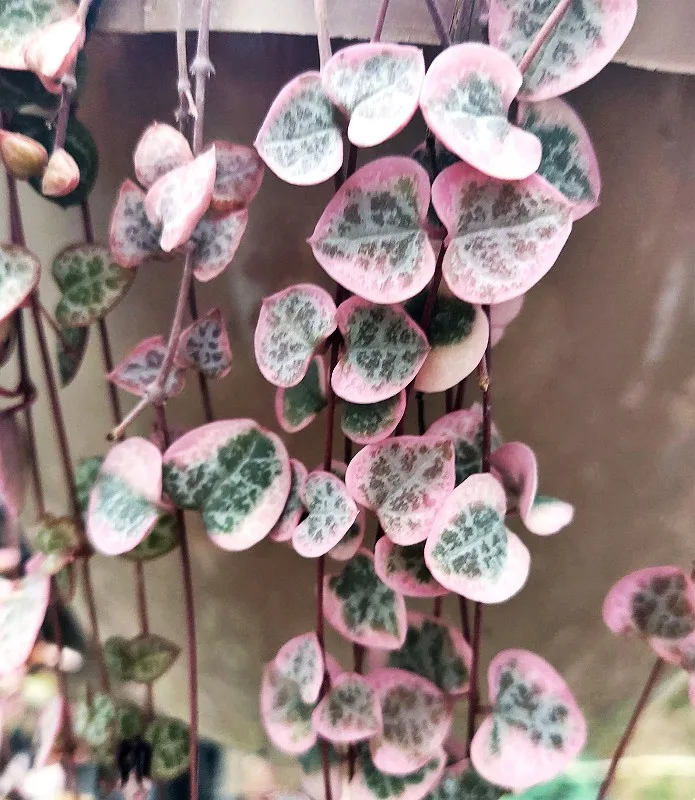
Watering Plants Properly - The Contented Plant
Wednesday 5th of October 2022
[…] Read our Watering guides on succulents, snake plants and the String of Hearts Plants. […]
String of Dolphins Plant Care - The Contented Plant
Tuesday 10th of May 2022
[…] Read our String of Hearts Watering Guide for more information on how watering impacts the health of … […]